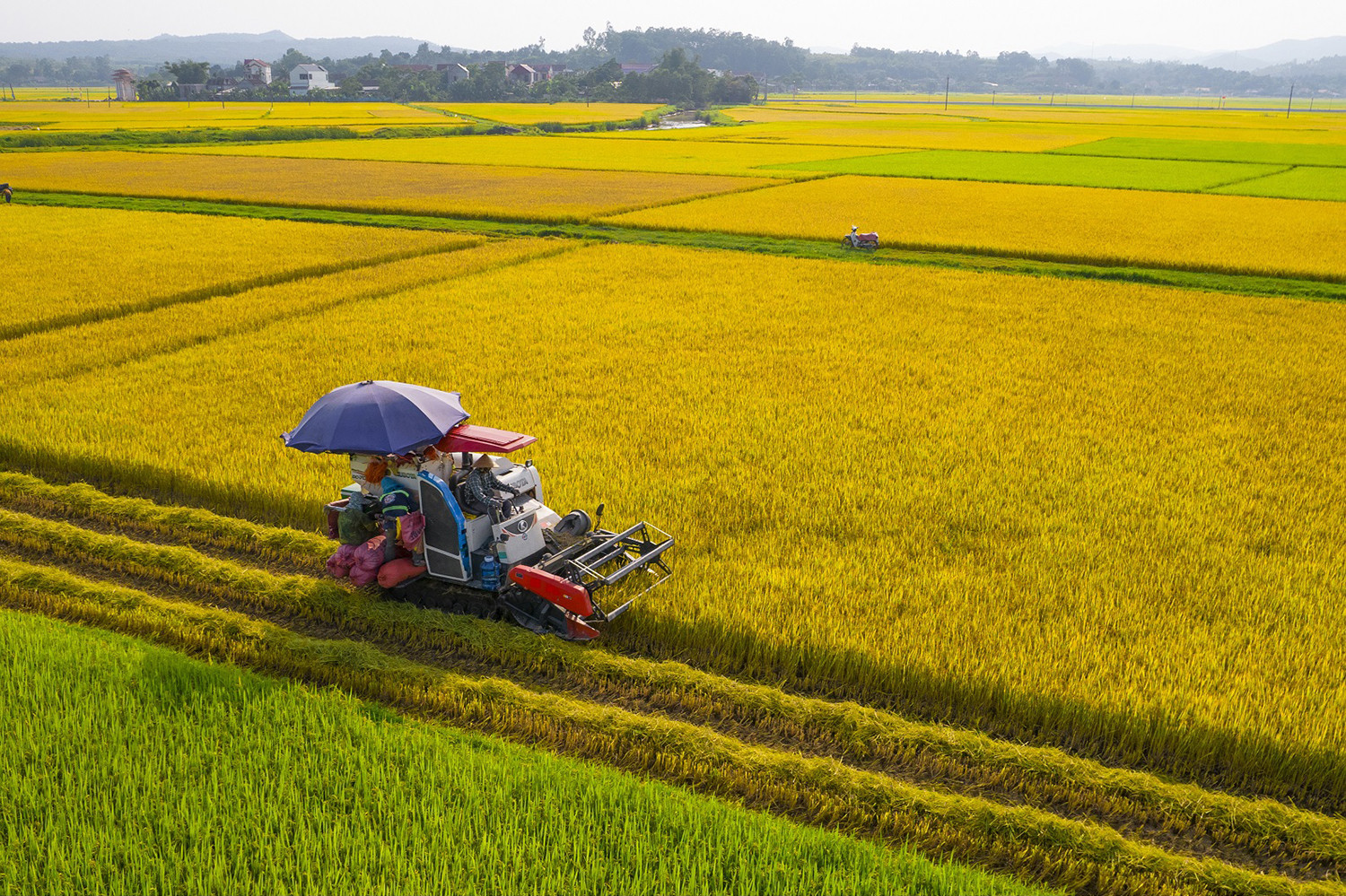
Vietnam, with its 7.1 million hectares of rice cultivation, is a global rice production powerhouse, yielding approximately 41-43 million tons annually. This substantial output not only satisfies domestic demand but also supports the export of 7-8 million tons of rice each year.
However, rice cultivation is the largest source of CO2 emissions in Vietnam's agricultural sector, accounting for 39.1% of the 90 million tons of CO2 emitted annually. Dr. Minh Hai Tran, Vice Rector of the School of Public Policy and Agricultural Development, explains that emissions in rice farming primarily stem from the use of fertilizers, pesticides, irrigation practices, and, notably, the handling of straw.
He points out that burning straw depletes soil nutrients, reduces biodiversity, and pollutes the environment, while burying straw in wet fields exacerbates greenhouse gas emissions, particularly methane, which is significantly more potent than CO2.
The Mekong Delta, Vietnam’s largest rice-producing region, generates around 24 million tons of straw annually. However, only about 30% of this straw - approximately 7 million tons - is collected and utilized. The remaining 17 million tons are often burned or buried in fields, leading to a significant waste of agricultural by-products and increased environmental pollution.
To address this issue, the Ministry of Agriculture and Rural Development, in collaboration with local governments, is piloting a project aimed at developing 1 million hectares of high-quality, low-emission rice farming linked to green growth in the Mekong Delta by 2030.
The project’s strategies for reducing emissions in rice cultivation include decreasing the use of seeds, fertilizers, and pesticides; employing alternate wetting and drying irrigation methods; and removing straw from fields or treating it in ways that minimize emissions. These practices are expected to significantly cut methane and other greenhouse gases.
Initial results from these pilot models have shown promise. The amount of rice seed used has been reduced from 140kg to 60kg per hectare, fertilizer application has been cut from 3-4 times to twice per crop, and the use of inorganic fertilizers has decreased by at least 20%. Additionally, pest issues and post-harvest losses have been reduced. Rice harvested from these models is being sold at a price 200-300 VND higher per kilogram than conventionally grown rice.
Rather than burning or burying straw, farmers are now rolling and removing it from the fields, selling it for 400,000 VND per hectare. This practice helps reduce organic toxicity in rice plants and increases farmers' income, while also offering opportunities for the reuse of straw in various applications.
The pilot models have also demonstrated a reduction in greenhouse gas emissions, cutting between 2-6 tons of CO2e (carbon dioxide equivalent) per hectare compared to conventional fields.
Dr. Minh Hai Tran notes that the Department of Crop Production, in coordination with the Agricultural Environment Institute, is developing a system for measuring, reporting, and verifying (MRV) greenhouse gas reductions in rice farming, with the goal of eventually trading carbon credits.
The Ministry of Agriculture and Rural Development is also collaborating with the Transformative Carbon Asset Facility (TCAF) to price carbon credits at 20 USD per credit. If farmers adopt all recommended practices, they can reduce emissions by 30%, equivalent to two carbon credits, generating an economic benefit of 960,000 VND.
In a circular economy, straw is not merely an agricultural by-product; it is a valuable input for various industries. For example, straw can be used as roughage for livestock, bedding for animals, a substrate for growing mushrooms, or mulch for crops.
Pham Hieu, Director of the Can Tho Crop Production and Plant Protection Department, reports that in local circular economy models, traditional rice farming generates an income of 86 million VND per hectare per year. However, by utilizing straw to grow mushrooms or produce organic fertilizers, farmers can increase their income to 133 million VND per hectare per year.
Therefore, the millions of tons of straw produced annually are considered a "goldmine" for the agricultural sector. Properly managing straw not only reduces greenhouse gas emissions but also enables farmers to earn additional income through carbon credits, straw sales, and its use in mushroom cultivation, livestock feed, and other applications.
Conversely, continuing to bury straw in wet fields will not only increase emissions in rice farming but also result in missed opportunities for income from carbon credits and the sale of straw.
Tam An